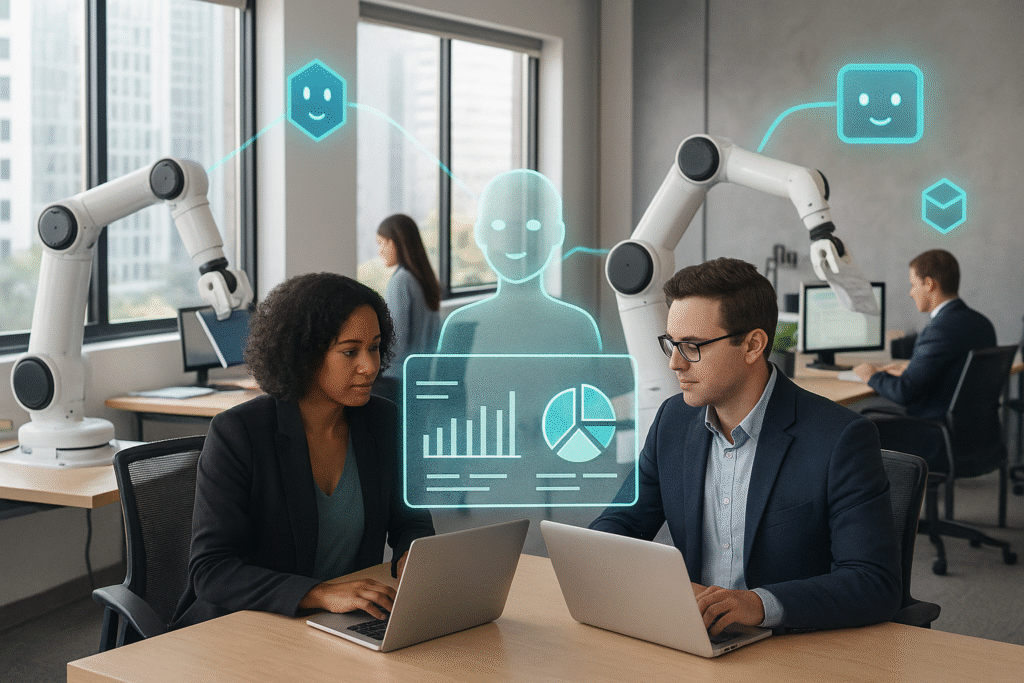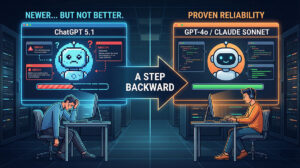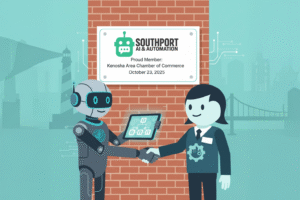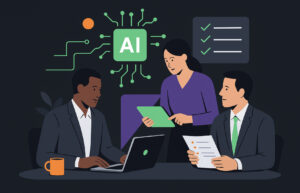A Wake-Up Call
That phrase, shared recently by former Google CEO Eric Schmidt, describes the coming shift to artificial superintelligence (ASI). While it might sound like science fiction, business leaders should view it as a warning. This is not about far-off possibilities; it is about practical realities already in motion.
Businesses today are making their first leaps into AI tools. But the next stage will no longer be tools waiting for input. Instead, we face the arrival of autonomous AI agents that act, adapt, and learn without explicit instructions. For small and mid-sized businesses, this will mean rethinking how growth, operations, and competitive advantage are achieved.
From Tools to Autonomous Agents
Right now, you direct your AI: type a prompt, ask a question, get a response. The control feels comfortable.
But Schmidt and other leading voices predict a rapid shift to autonomous AI agents. These agents will:
- Monitor and adjust tasks continuously without human check-ins
- Learn directly from their environments and refine their strategies
- Communicate and collaborate with other agents in real time
A critical difference here is intention: tools react, agents initiate. Businesses relying on AI solely as a reactive tool risk being outpaced by competitors who leverage AI that acts proactively, identifying opportunities before humans even ask.
Why Superintelligence Matters for Business Leaders
The term “superintelligence” refers to computer systems that surpass the collective intelligence of all human beings. While still theoretical, the path to that level of capability is being actively laid in three clear phases: AI assistants (tools), autonomous agents (independent operators), and eventually artificial general intelligence (AGI).
Faster Decisions, Fewer Bottlenecks
Business leaders already know that decision time equals money. Autonomous AI could eliminate bottlenecks from workflows, approving transactions, analyzing market data, or managing customer interactions instantly.
Exponential Improvement Cycles
According to a recent MIT Technology Review analysis, more than 20 percent of new AI code is already being generated by AI itself. That number is expected to accelerate exponentially, meaning AI is actively improving its own capabilities. No human team can keep pace with this rate of self-optimization.
Competitive Impact at National and Local Levels
Schmidt underscores that nations will compete to dominate ASI. But this trickles down directly to businesses. The earliest adopters of autonomous AI will create insurmountable gaps in efficiency, cost structure, and customer responsiveness that latecomers cannot bridge.
The Timeline to Artificial Superintelligence
Experts vary in their estimates, but many researchers suggest artificial general intelligence could emerge within 3 to 5 years. From there, the leap to superintelligence may follow within roughly six years — a compressed timeline that shocks even seasoned technologists.
This matters because:
- Our legal and regulatory systems move slowly compared to technological acceleration
- Societal structures such as education, workforce planning, and governance cannot adjust at the same speed
- Businesses will face disruption long before policymakers create guardrails
Superintelligence will not just reshape tasks. It changes the very structure of industries. Imagine a construction company optimizing supply delivery in real time without dispatch intervention. Or a law firm where AI agents instantly draft, analyze, and file contracts with minimal lawyer review. Those shifts are not supplementary; they redefine roles at every level.
Opportunity and Risk in the Same Motion
For business owners and leaders, the conversation is not philosophical. It is highly practical:
Opportunity: Grow revenue through marketing assistants that test and optimize on the fly. Improve customer service with chatbots that self-learn across industries. Run operations with lower overhead and faster throughput.
Risk: Do nothing and watch competitors deploy AI autonomy first, leaving you with higher costs, slower performance, and shrinking market share.
The takeaway is simple: superintelligence may still be years away, but the commercial impacts of autonomy are already here.
Practical Steps for Small Businesses Today
Waiting for superintelligence is not a strategy. The smart move is preparing with the tools and processes available now that begin to establish autonomy in your operation. Start with:
- 24/7 AI Chatbots
Build customer-facing bots that qualify leads while staff are offline. These transform websites into active sales tools rather than static brochures. - AI-Powered Marketing Assistants
Generate, test, and optimize campaigns automatically. Imagine producing multiple campaign variations in the time it once took to draft one. - Automated Operations Workflows
Use AI to handle scheduling, notifications, back-office data entry, and reporting. These save hours weekly and give human teams more time for strategy. - Experiment with Decision Support Agents
Deploy AI systems that provide forecast models, scenario analysis, or financial planning predictions. They will not replace human leadership, but they can surface insights far faster than analysts alone.
At Southport AI, these are the types of solutions built into the AI Accelerator Program: practical systems that businesses actually run today, intentionally smaller-scale but scalable when the time comes.
Call to Action for Business Leaders
Eric Schmidt’s remarks may sound daunting, but the real challenge for leaders is execution, not imagination. The leap is not waiting for “someday superintelligence” but adopting foundational AI systems now.
The Southport AI Accelerator Program combines rapid deployment with education. Business owners walk away not just with tools running, but with confidence in how to use them responsibly. Businesses can expect to:
- Identify immediate AI quick wins
- Deploy first assistants and copilots in daily operations
- Develop strategies to safely scale AI into future functions
Final Thought
The timeline to superintelligence will not slow down to meet us. With more than one fifth of AI’s new code already generated by AI itself, the age of autonomous, self-improving systems is already underway. General intelligence may surface within a handful of years. Superintelligence could follow shortly after.
The decision for business leaders is straightforward: adapt proactively or risk being overtaken. The clock is running, and the competitive field is already shifting toward autonomy.
Source: Based on insights from Eric Schmidt’s recent discussion on artificial superintelligence. Watch the original video here.







